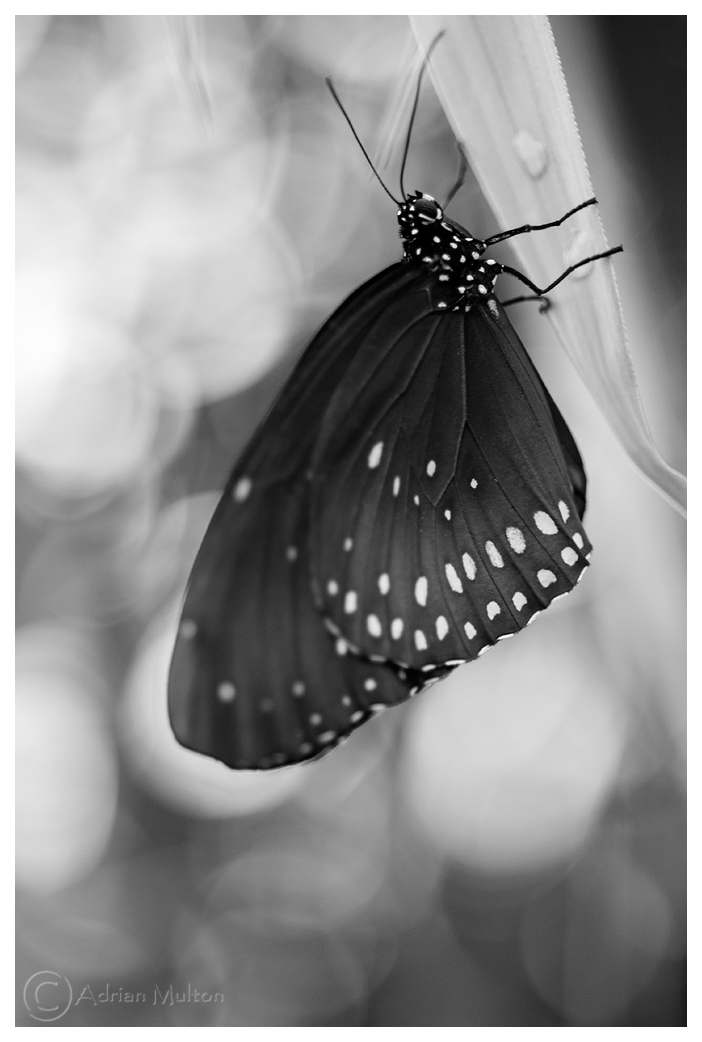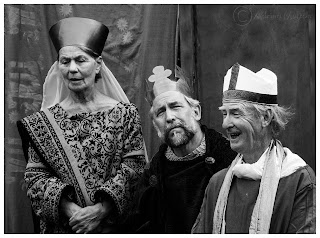A few weeks ago the Wivenhoe Photography Group jumped in a car and spent a pleasant Saturday photographing the beautiful and exotic butterflies at Jimmy's Farm.
The butterflies live in a purpose built house so the light is not to contrasty, being diffused by the translucent ceiling.
That meant increasing ISO to 400 for handheld shots; I left the tripod at home, not being sure it would be ok to use in there.
Shooting with a 60mm macro lens at f2.8 helped with the low light levels, of course.
The shallow depth of field produced by f2.8 at close quarters also suited the subject, helping the butterflies stand out from quite busy backgrounds.
I tried a few different angles - it's too easy to focus exclusively on the fascinating and often colourful wings.
Stepping back and framing the butterflies with the surrounding foliage also produced some variety.
Some lovely soft bokeh was captured when the light came through the foliage in the background.
I thought this fellow deserved the black and white treatment too.
This was probably my favourite butterfly; simple and elegant patterning.
It was also happy to play ball. Some were more elusive and required some patience before they settled close enough to capture with the 60mm.
Apart from black and white conversions, largely avoided the sfx with this set - the next image being the exception; a bit of my personal version of the digital stocking filter applied.
A reminder of their fragility.
Focus on the eyes.
Colours were pumped up a little in post, of course, to counteract the relatively unsaturated appearance of RAW images.
I use curves in the LAB colourspace to boost colour, rather than the hue/saturation slider.
This allows you too boost colour without changing the brightness of the image.
The feeding trays were always a good spot to find one or two butterflies, but I prefered the more natural backgrounds.
A bit of creative use of negative space.
Finally, wings are not the only source of patterns.




















































